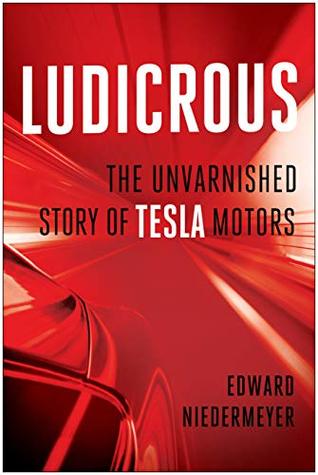More on this book
Kindle Notes & Highlights
Read between
December 16 - December 26, 2022
no less than $19 billion in capital from private and public markets. That puts the price of its environmental contribution at $4,750 per ton of carbon,
It also makes almost every other form of carbon reduction look like a screaming deal, including carbon capture for fossil-fuel power plants (up to $600 per ton), building advanced nuclear plants ($59 per ton), and a home weatherization assistance program ($350 per ton).
In short, if Tesla were a government carbon-reduction program, it would be indefensible on a cost-benefit basis.
The fact that this hasn’t happened yet adds to the growing evidence that Tesla exists to serve Musk above all else.
Only one thing is certain: Tesla no longer has a sense of identity independent of Musk, and it will be dragged along on any adventure he finds himself drawn into. Once you select Ludicrous Mode, it seems there is no going back.
For the first time, Tesla fans were not falling in love at first sight with a much-hyped new Tesla, and their cognitive dissonance at this bizarre turn of events couldn’t be concealed.
Instead, the stock seemed to have a discrete energy of its own, more tied to the ineffable “animal spirits” of the capital markets and the success of Musk’s mythos crafting than to any rational assessment of its actual prospects.
Regulatory credit sales continued to be responsible for all of Tesla’s profits in 2019 and the first half of 2020
It turned out that the repeated fires and internal chaos at the Fremont factory’s paint shop had been exacerbated by Model 3’s “production hell,” resulting in numerous unpermitted modifications and nineteen Clean Air Act violations
These deeply impressive in-person demonstrations of maturing autonomous driving systems objectively outshine even the promotional videos Tesla has released,
only Tesla remained in hype mode, selling the increasingly unlikely prospect of Level 5 autonomy using Level 2 hardware . . . and was far more richly rewarded by investors for its brazen confidence.
If Tesla’s side or rear cameras misclassify—or fail to identify—an obstacle or threat due to a shortcoming in training data (which can hardly encompass every single situation found on chaotic public roads), it has neither radar nor lidar to warn the system that something is actually there.
Not only did this abortive effort to develop an in-house radar sensor betray the fact that Musk at least suspected that the hardware suite he sold as being Level 5–capable was in fact insufficient for the task, it highlighted the aimless nature of “Full Self-Driving” development.
Instead of taking the critical step of selecting an operating domain based on a particular economic or technical opportunity, the decision devolved into convincing Musk that progress was being made based on where he lived, worked, and typically drove.
This haphazard approach to an immensely challenging project was typical of how things worked at Tesla, the engineers explained, echoing numerous other sources who described the culture at Tesla as coming down to “making Elon happy.”
The potential consequences of developing an autonomous driving system this way are not limited to the possibility that Tesla might fail to deliver on something it’s been collecting customer cash for, but includes the chance that “Full Self-Driving” may someday work well enough in the “...
This highlight has been truncated due to consecutive passage length restrictions.
Musk no longer seems like the shockingly audacious outsider I long saw him as and more as a reflection of where society itself seems to be headed.
we seem so entranced by what we want to see and believe that we are often unable to see things as they are.
The only question remaining about Tesla is one that emerged early in the process of writing this book: when, if ever, will the fantasy falter and reality reimpose itself?


